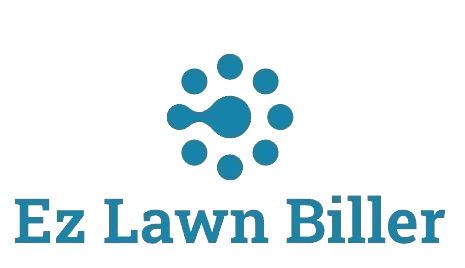Top Tools to Help You Improve Cash Flow
Improving cash flow is vital for the sustainability and growth of any business. Whether you are a small startup or a large corporation, managing your cash flow effectively can make a significant difference in your operational efficiency and profitability. This blog post will explore various tools and strategies that can help you take control of your cash flow, minimize expenses, and ultimately improve your financial health. From specialized software to practical cash management techniques, we’ve got you covered.
In today’s fast-paced business environment, having a solid cash flow management system in place is more important than ever. Cash flow issues can lead to missed opportunities, stalled projects, and even business failure. Fortunately, there are numerous tools available that can help streamline your financial processes and ensure that your cash flow remains positive. In this article, we will delve into some of the top tools to help you improve cash flow, including software solutions, financial strategies, and best practices for managing your finances.
Understanding Cash Flow Management
Before diving into the tools, it’s crucial to understand what cash flow management entails. Cash flow management involves tracking the flow of cash in and out of your business, ensuring that you have enough liquidity to meet your obligations. According to a report by QuickBooks, 61% of small businesses struggle with cash flow, underscoring the importance of effective management strategies.
Cash flow can be affected by various factors, including sales cycles, payment terms, and operational expenses. For instance, businesses that offer payment terms may find that their cash flow fluctuates significantly based on when clients pay their invoices. This is where cash flow management tools come into play.
1. Automated Invoicing Solutions
One of the most effective ways to improve cash flow is by utilizing automated invoicing software. By automating your invoicing process, you can ensure that bills are sent timely and accurately. This significantly reduces the time spent on manual tasks and minimizes the chances of errors.
For example, software like EZ Lawn Biller allows lawn care businesses to automate invoicing, customize templates, and send recurring invoices. This not only simplifies the billing process but also improves client communication. Automated reminders can be sent to clients, prompting them to pay their invoices on time and thereby improving cash flow.
Additionally, automated invoicing can help you track which invoices are overdue, allowing you to follow up with clients who may have forgotten to pay. This proactive approach can significantly enhance your cash flow management.
2. Cash Flow Forecasting Tools
Another essential aspect of cash flow management is forecasting. Understanding projected cash inflows and outflows helps businesses make informed financial decisions. Cash flow forecasting tools can provide insights into expected revenue, expenditure, and future cash needs.
Software like Float or Pulse can help businesses create accurate cash flow forecasts based on historical data. By analyzing past performance, these tools allow businesses to predict future cash positions. This forecasting can help businesses plan for potential shortfalls and make strategic decisions regarding expenditures.
For instance, if a forecast indicates a cash shortfall during a slow season, a business can prepare by cutting unnecessary expenses or seeking additional funding. Effective forecasting minimizes the risk of cash flow crises and ensures that businesses remain financially agile.
3. Expense Management Software
Managing expenses effectively is crucial for maintaining a healthy cash flow. Expense management software helps businesses track spending, categorize expenses, and identify areas where savings can be made. Tools like Expensify or Zoho Expense enable businesses to capture receipts, manage reimbursements, and gain visibility into their spending habits.
By analyzing expenses, businesses can identify patterns and make informed decisions to reduce unnecessary costs. For instance, if a company sees that it spends a significant amount on travel expenses, it may choose to implement remote work policies or utilize video conferencing tools to cut those costs.
Moreover, when integrated with invoicing systems like EZ Lawn Biller, expense management tools can provide a comprehensive overview of financial health, making it easier to manage both income and expenditures.
4. Payment Processing Solutions
Fast and efficient payment processing can significantly improve your cash flow. Delayed payments can lead to cash flow issues, especially for businesses with tight margins. Utilizing payment processing solutions that offer online payment options can reduce the time it takes for clients to pay their invoices.
Platforms like PayPal, Stripe, and Square allow businesses to accept payments online and provide clients with convenient payment options. The quicker clients can pay, the quicker you can access funds. Offering multiple payment options can also enhance customer satisfaction, encouraging timely payments.
Furthermore, integrating payment processing systems with your invoicing software, such as EZ Lawn Biller, can streamline the entire billing process, allowing clients to pay directly through their invoices. This integration minimizes delays and enhances the efficiency of your cash flow.
5. Financial Analytics Tools
Data-driven decision-making is vital for effective cash flow management. Financial analytics tools provide insights into your financial performance, allowing you to track key metrics, identify trends, and make informed decisions. Software like QuickBooks or Xero can generate detailed financial reports, helping businesses analyze their cash flow in real-time.
By monitoring cash flow metrics, such as the cash conversion cycle, businesses can identify areas that need improvement. For example, if a company’s cash conversion cycle is longer than industry standards, it may need to reevaluate its inventory management or payment terms.
Moreover, these tools can help businesses set benchmarks and track performance over time. This level of visibility is essential for adjusting strategies and ensuring long-term financial stability.
6. Establishing a Cash Reserve
While tools and software play a crucial role in managing cash flow, developing strong financial habits is equally important. Establishing a cash reserve can provide a safety net for unexpected expenses or cash flow fluctuations. A cash reserve acts as a buffer, allowing businesses to navigate lean periods without resorting to loans or credit.
To build a cash reserve, businesses should prioritize setting aside a portion of their profits regularly. This could be done by allocating a percentage of monthly earnings into a separate savings account. Over time, this reserve can grow, providing peace of mind and financial security.
Additionally, maintaining good relationships with suppliers can also help businesses negotiate favorable payment terms, allowing them to retain cash longer while still meeting obligations. This strategy contributes to a healthier cash flow and minimizes financial stress.
7. Regular Financial Reviews
Conducting regular financial reviews is a vital practice for maintaining cash flow health. By routinely assessing financial statements and cash flow reports, businesses can identify trends, track progress, and adjust strategies as needed. Monthly or quarterly reviews help businesses stay on top of their financial performance and make proactive decisions.
During these reviews, businesses should analyze cash flow statements, income statements, and balance sheets. Identifying fluctuations in cash flow can alert management to potential issues that may arise in the future.
Furthermore, involving your team in financial reviews can lead to better insights and innovative solutions. This collaborative approach fosters accountability and encourages everyone to contribute to cash flow optimization.
Conclusion
In conclusion, improving cash flow is essential for the sustainability and growth of any business. By leveraging the right tools, such as automated invoicing solutions, cash flow forecasting tools, expense management software, and financial analytics, businesses can take control of their finances.
Establishing strong financial habits, such as building a cash reserve and conducting regular financial reviews, further enhances cash flow management. The combination of technology and sound financial practices can lead to improved cash flow, enabling businesses to thrive in a competitive marketplace.
As you explore these tools and strategies, remember that every business is unique. Assess your specific needs and choose the solutions that align best with your operational goals. Start taking charge of your cash flow today and watch your business flourish!




